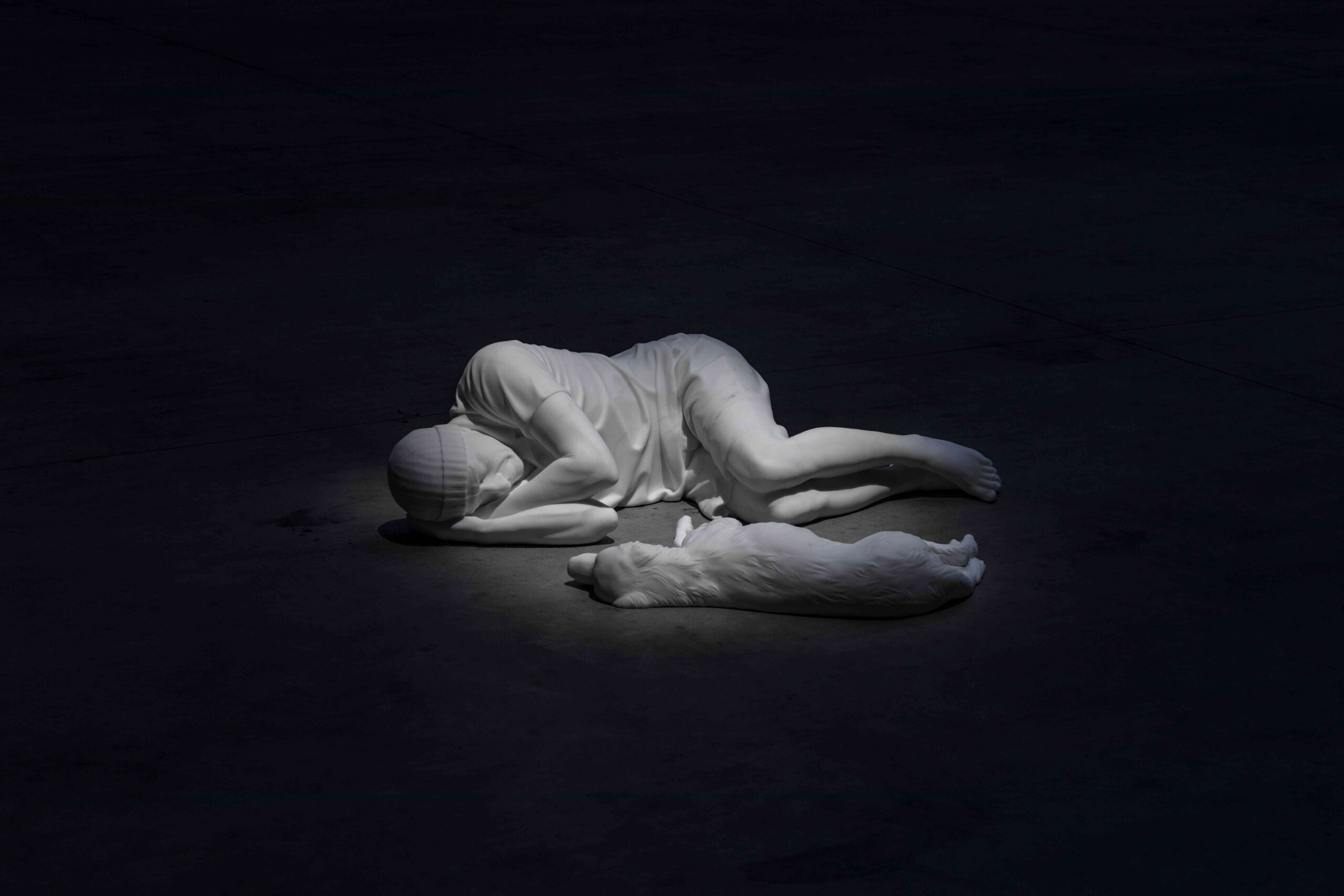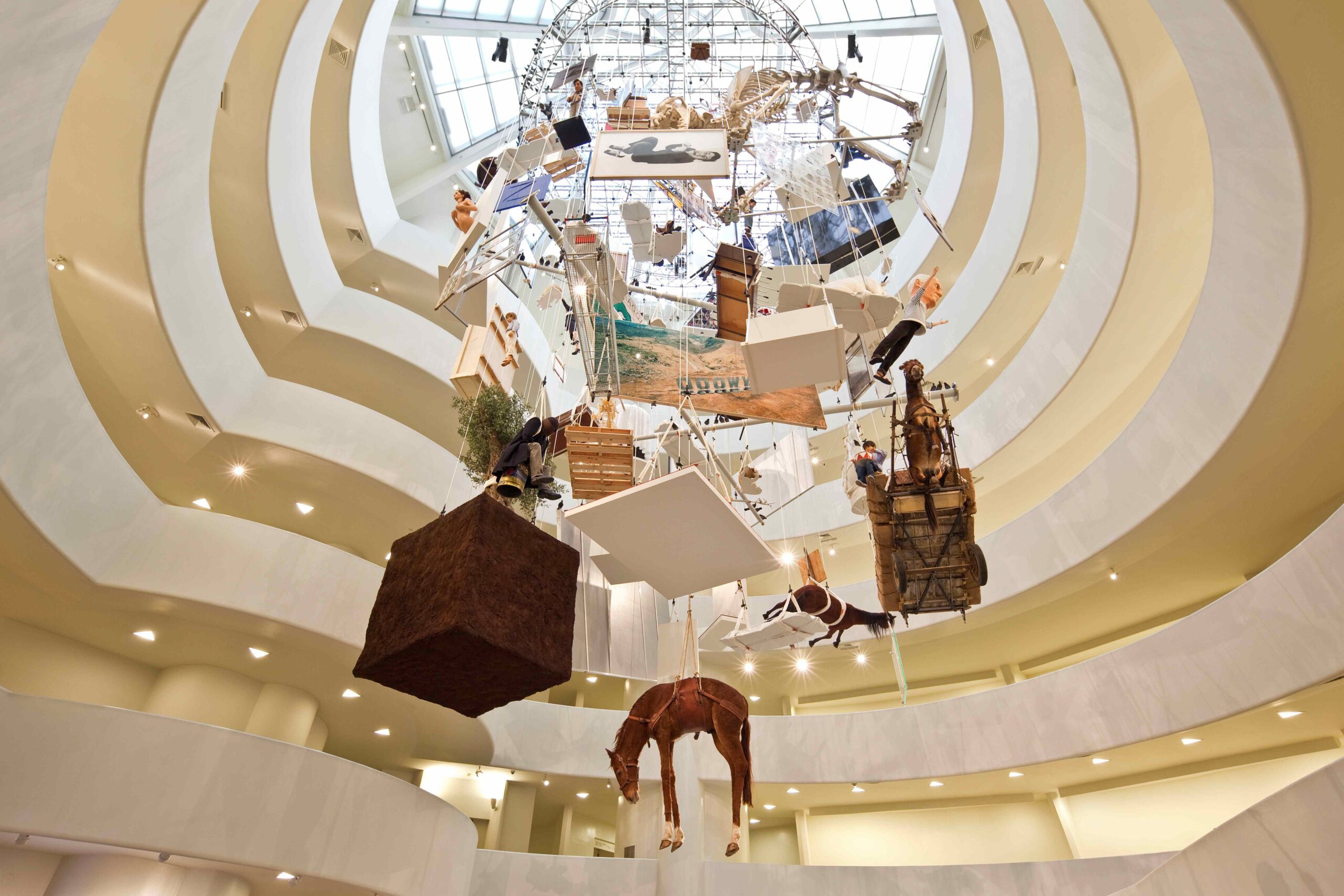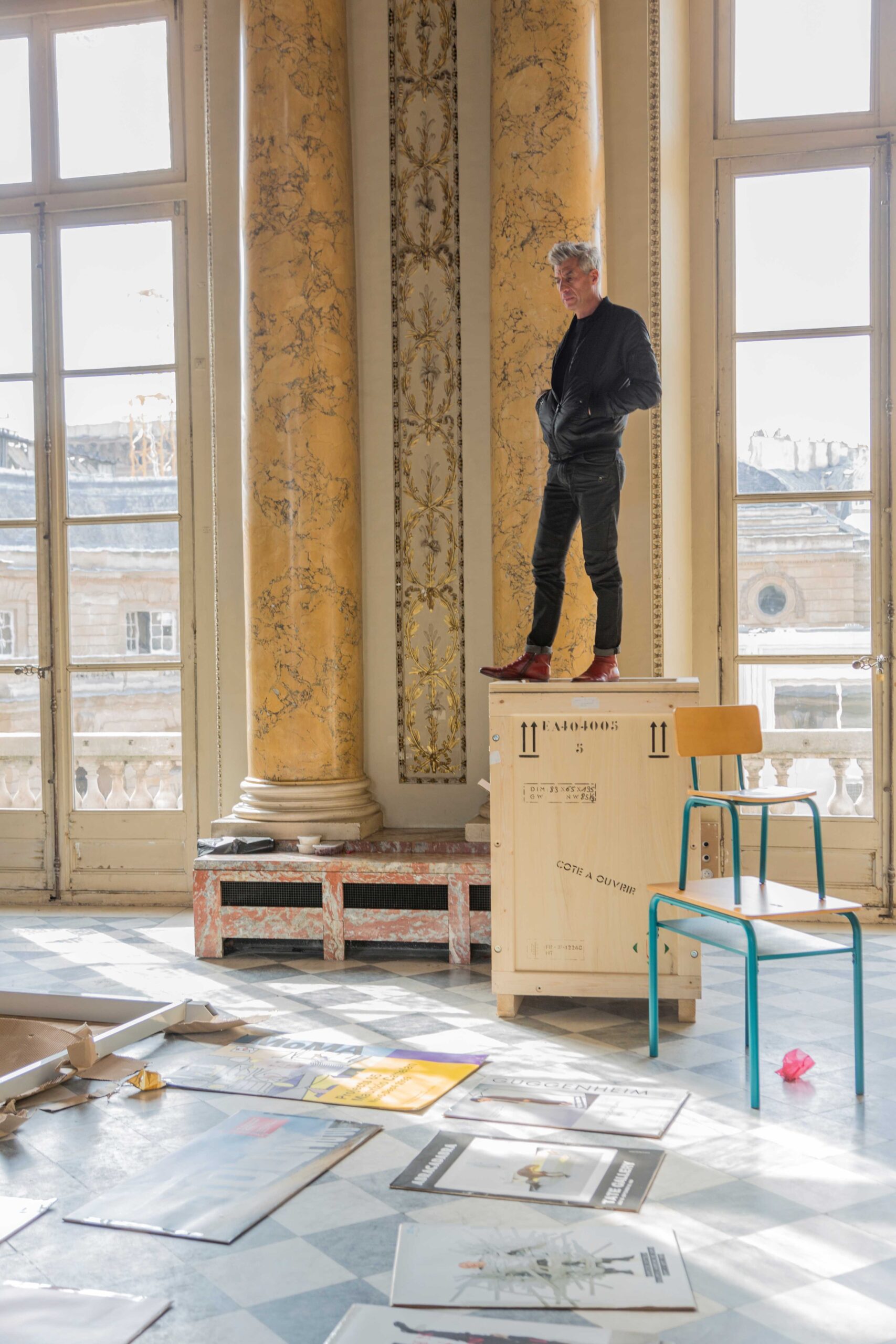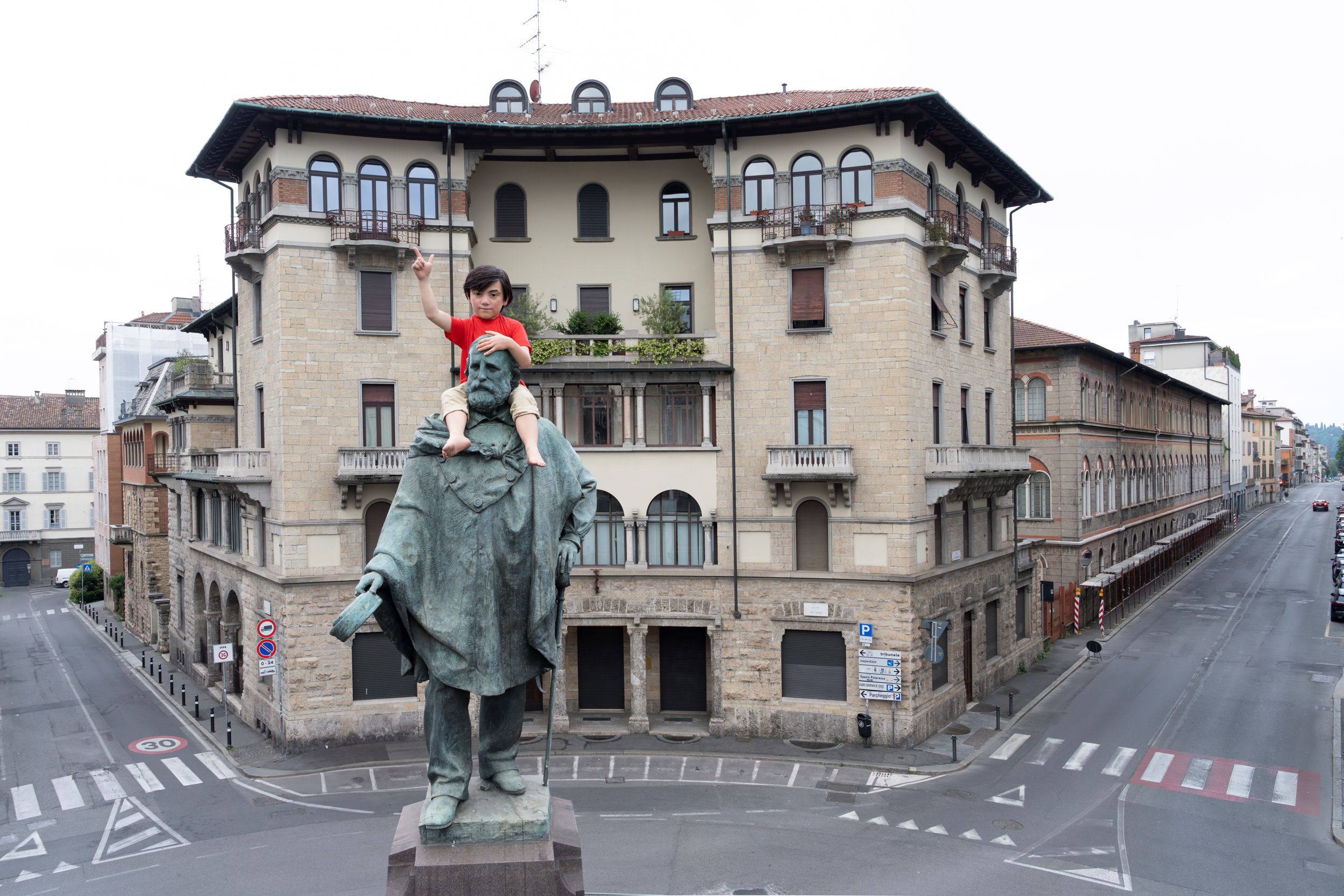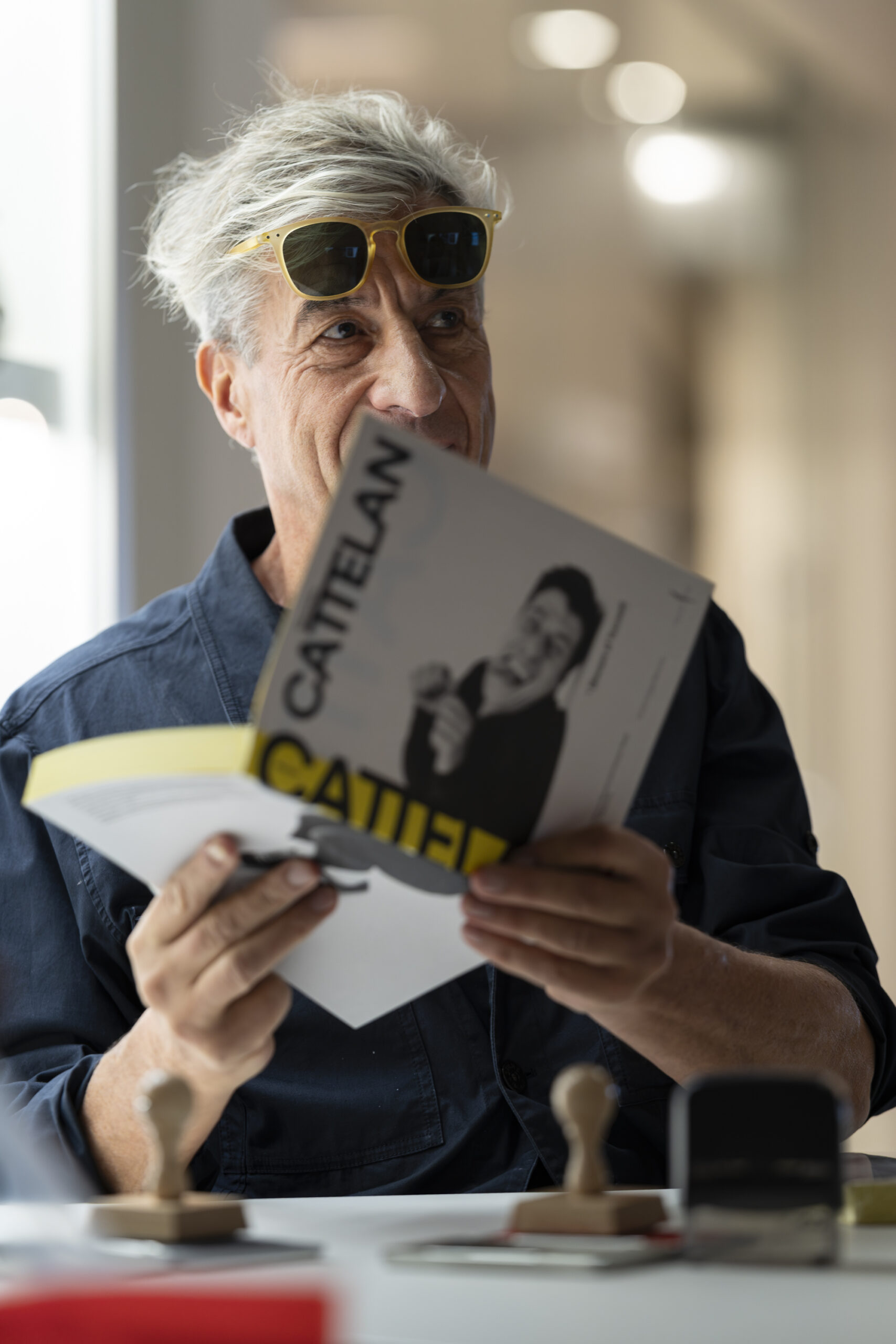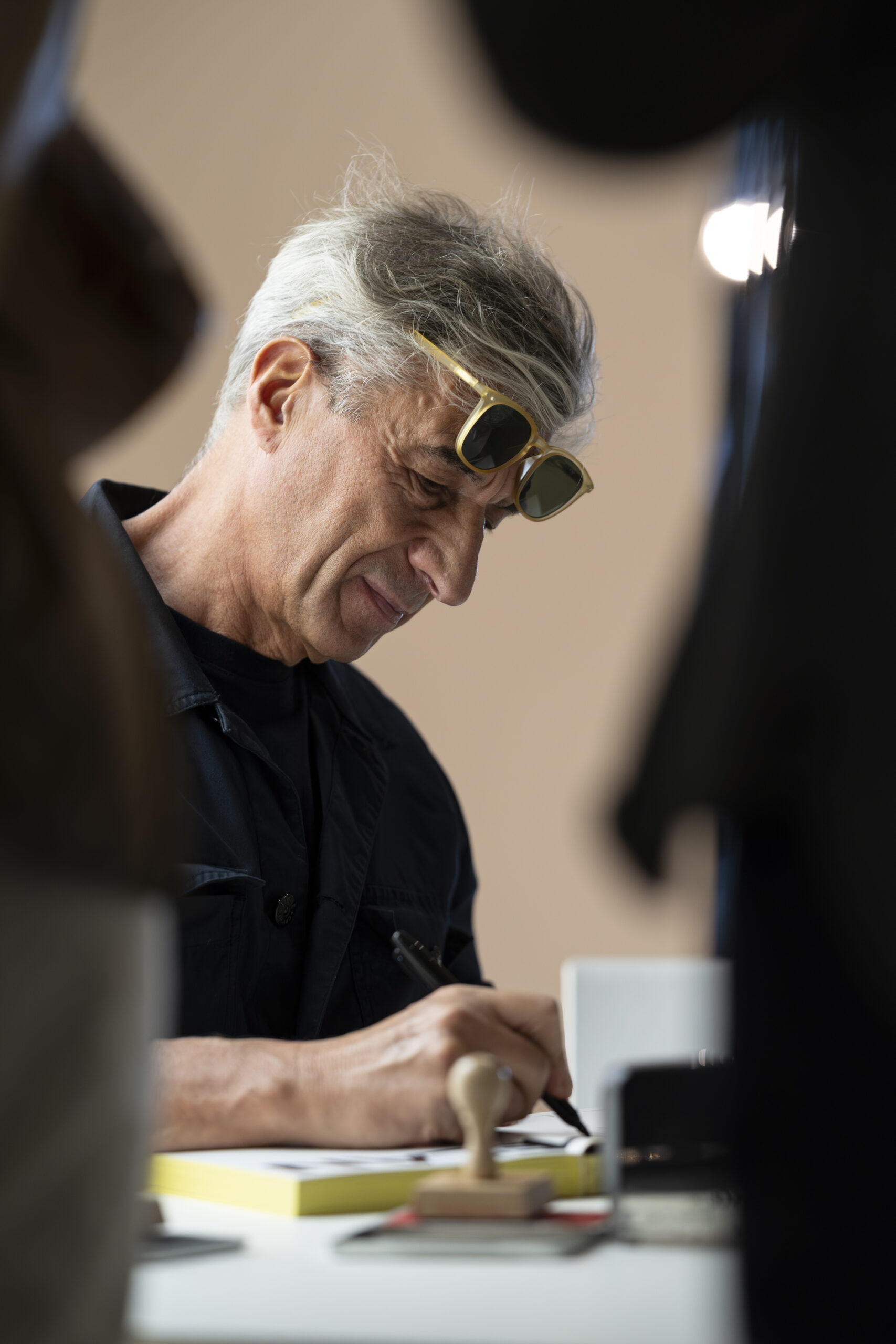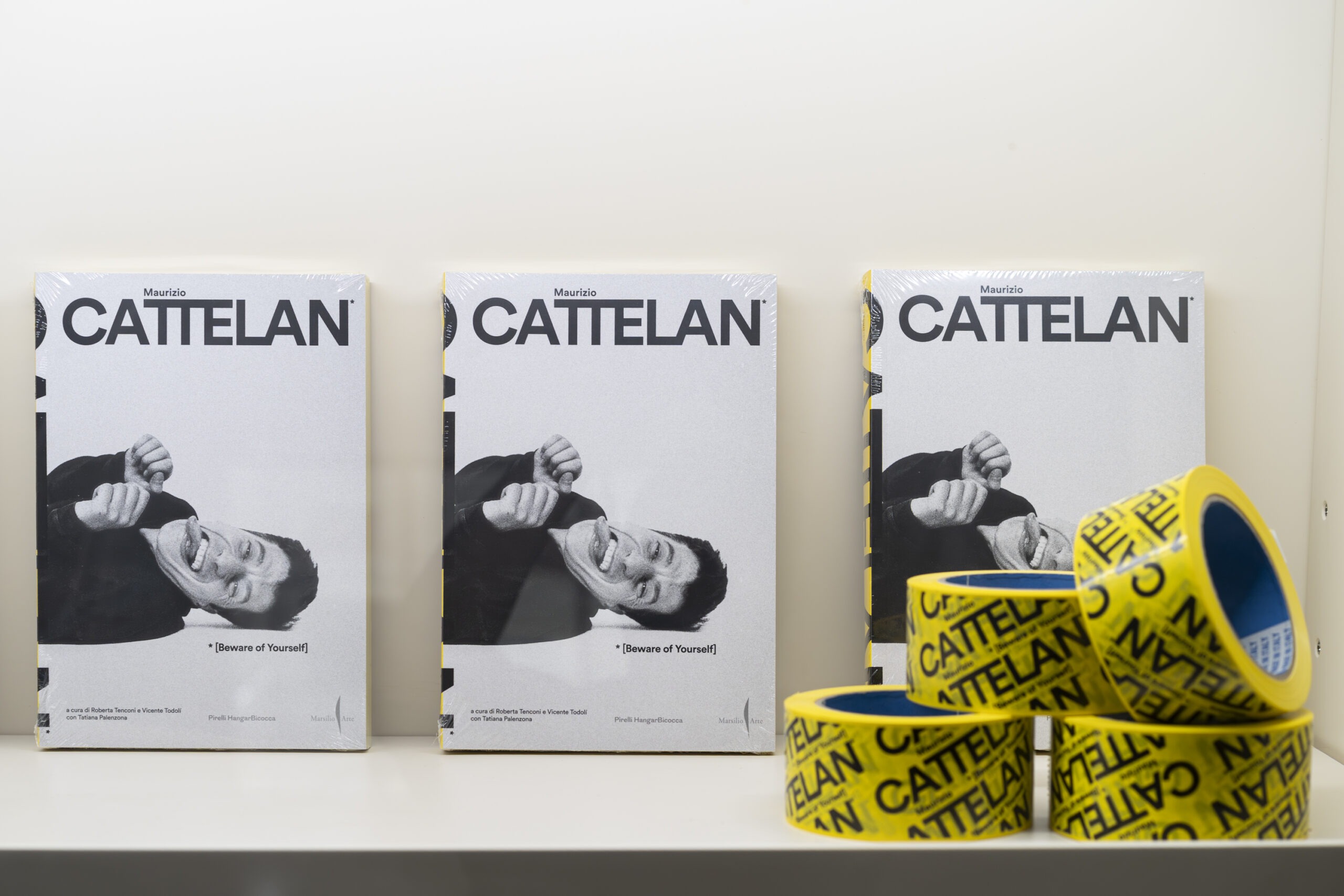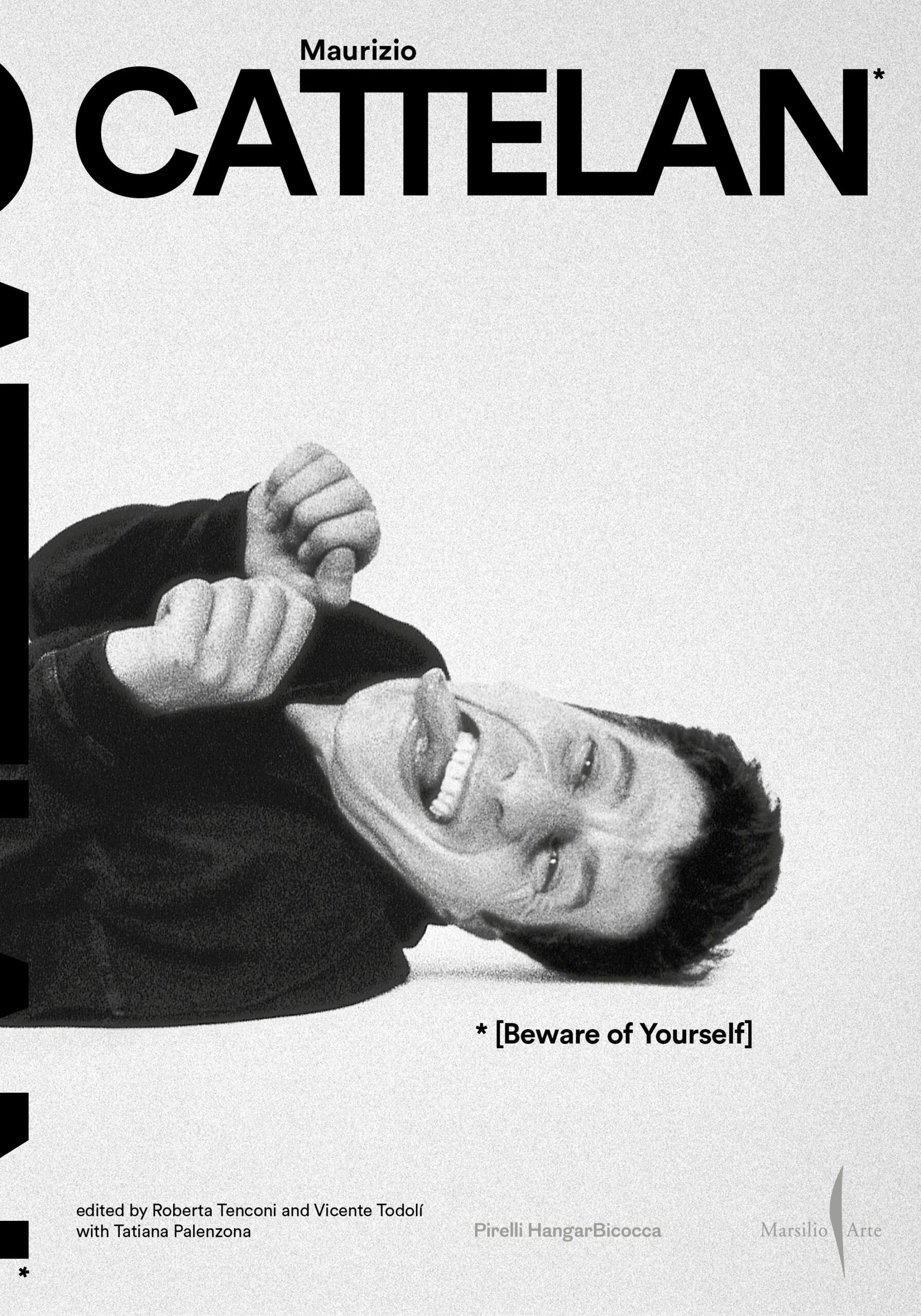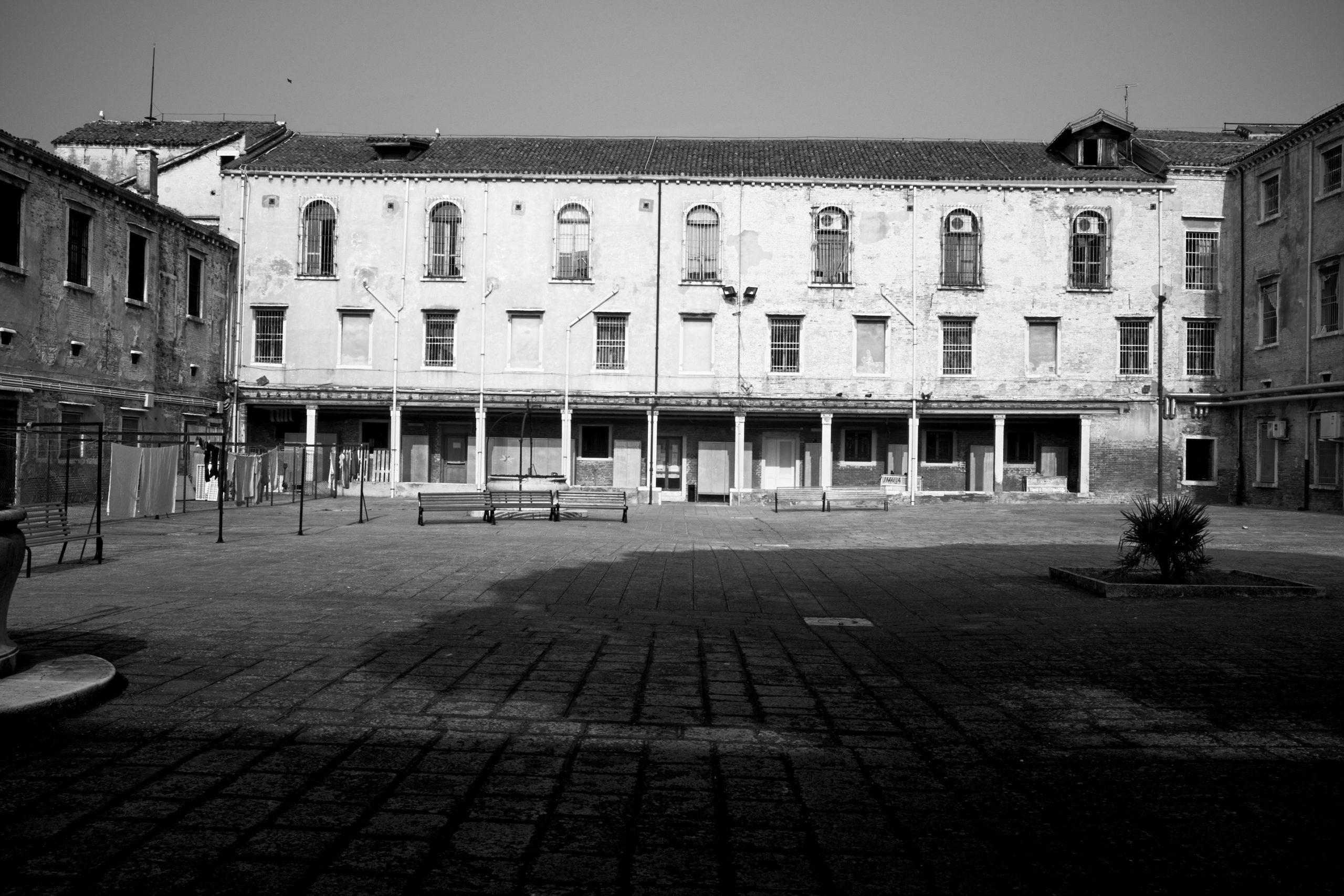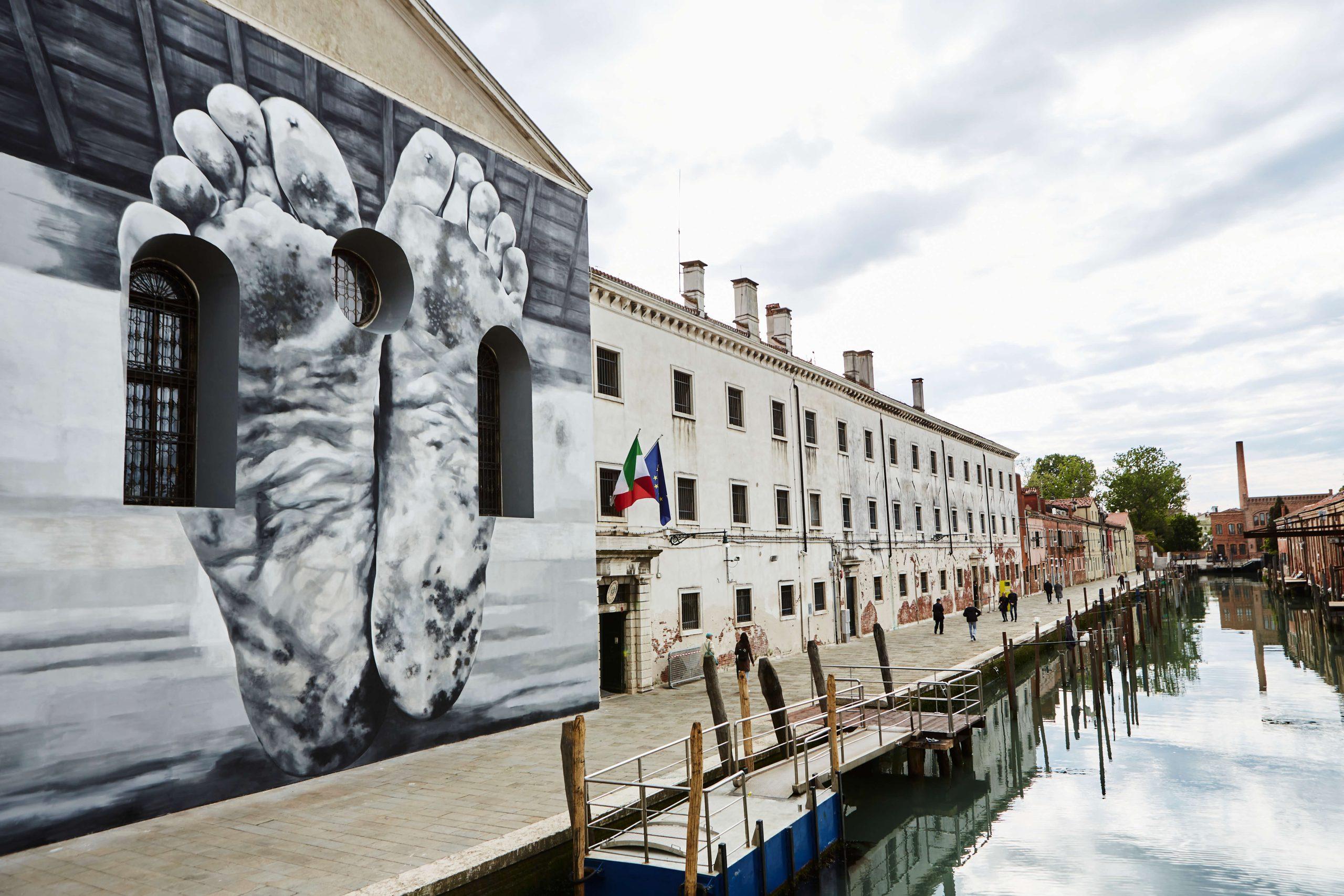Almost forty years of conversations, interviews and writings: this is the ground on which “Beware of Yourself”, the new volume published by Pirelli HangarBicocca and Marsilio Arte, has its roots. The words belong to Maurizio Cattelan, and we interviewed him
Memory, insecurity, failure and recklessness: these are just some of the concepts that emerged during our conversation with Maurizio Cattelan, protagonist of Beware of Yourself, the book edited by Roberta Tenconi and Vicente Todolí with Tatiana Palenzona, published by Pirelli HangarBicocca and Marsilio Arte and presented to the press on 14 October 2025 in Milan.
Not assignable to any specific publishing category, the volume straddles the line between catalogue raisonné, autobiography, personal diary and monograph, containing Cattelan’s reflections on his own history, from his beginnings in the late 1980s to the present day.
It is a sort of “mental map” in which words alternate with images of the works, exhibitions and projects that have marked the artist’s career. Following the solo exhibition Breath Ghosts Blind, held at Pirelli HangarBicocca between 2021 and 2022, and the accompanying catalogue, and after Index (2022) – an anastatic collection of all the interviews conducted by Cattelan over two decades –, Pirelli HangarBicocca and Marsilio Arte have once again turned the spotlight on the work of an artist who never stops questioning himself.
The book, as Roberta Tenconi pointed out during the presentation, was an opportunity to put your words in order, but also to preserve the chaos. You said that it was useful for filling in the gaps in what you don’t remember. Did it help you understand more about your work, or did it bring out other things that you don’t really want to remember?
Both, but now, looking back, I am very surprised because I wonder where all these things came from. My fear – or, rather than fear, something that my family probably instilled in me – is a great insecurity. The desire to prove that I am not what they made me believe I am is something I will never be able to resolve, and the book demonstrates this. Insecurity does not explain the book, but looking back at it, it is surprising how much has been done and how little memory I have of it.
May I ask why you can’t remember?
I have a forty-year gap. The fact that my memory is so short is both good and bad. It’s bad for those around me, but it can be good because it makes you feel freer, even if, in the end, the issues are the same. We should change the algorithm.
When you mentioned insecurity, the word failure came to my mind, a word that has recurred in your words for years. What did it mean to you at the beginning, and what does it mean now?
Not much has changed. I think failure itself is fundamental because it leads you to understand things. It’s a form of learning. It’s a component of all human activities and serves to improve learning, the product, whatever the field. It’s a necessary step.
Is this idea also linked to the concepts of disappearance and absence, which you often address in your work?
They all go back to my childhood and they all end up in affection: lack of affection, excess of affection. When it’s missing, you compensate with other things. Absence is probably a form of defence against something you’re not given, that you haven’t been given. It’s something you’ve absorbed and today it becomes a preventive form of defence against a possible recurrence of that negative thing.
In the book, the word “sconsiderazione” made me think of recklessness, but in a less clear-cut way. Is that right?
I am reckless in not thoroughly evaluating what an action might cause. I evaluate it after the action has been taken. An action may be reckless, but it certainly leads to something that I consider a positive result.
Also in your art?
Once you have done a work and that work has been absorbed, repeating it would not help you learn anything new. So, in your next work, you try to raise the bar, to put yourself in a position of insecurity in order to do something risky.
Are all these methods the way you have chosen to live and remain in the art world?
There is a lot of talk about strategy, but I have always improvised quite a bit. I’ve always put one foot in front of the other, one brick on top of another. I move by units, not by volumes. To build a house, you have to start from the ground up. My way of building this house has been rather traditional; I didn’t start with the roof or the second floor. The results would have been interesting, but maybe the house wouldn’t have stood. It would have been a slightly more abstract house.
Interview by Arianna Testino


Captions:
The cover of Beware of Yourself. Pirelli HangarBicocca and Marsilio Arte, 2025
Maurizio Cattelan, Breath, 2021. Maurizio Cattelan. Breath Ghosts Blind, curated by Roberta Tenconi and Vicente Todolí, Pirelli HangarBicocca, Milan, 15 July 2021 – 20 February 2022 (solo exhibition). Photo Zeno Zotti
Maurizio Cattelan, Maurizio Cattelan. All, Solomon R. Guggenheim Museum, New York, 2011 – 2012. Photo Zeno Zotti
Maurizio Catelan portrayed by Zeno Zotti at the Monnaie de Paris during the installation of his exhibition Not Afraid of Love, 8 October 2016. Photo Zeno Zotti. Page 225 of the book
Maurizio Cattelan, One, 2025. Maurizio Cattelan. Seasons, GAMeC – Galleria d’Arte Moderna e Contemporanea di Bergamo and other venues, 2025, installation at the Rotonda dei Mille, Bergamo. Photo Lorenzo Palmieri
Maurizio Cattelan during the book signing of Beware of Yourself, Pirelli HangarBicocca, Milan, 2025. Photo Lorenzo Palmieri
The book signing of Beware of Yourself, Pirelli HangarBicocca, Milan, 2025. Photo Lorenzo Palmieri (cover photo)
Related products
Related Articles





